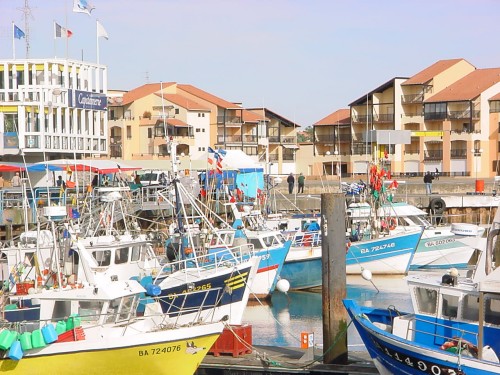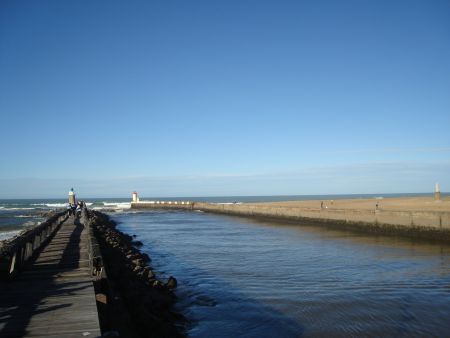Region: Aquitaine Department: (40) Landes Locality: Cote d'Argent

In days passed Capbreton had its involvement with forming history. King
Henry IV of Navarre (Basque) rode his horse into the then gothic Church in the Convent
(and bumped his head on the entrance portal over the doors).
Up to the 16th Century, the Capbretonnais used to fight on Land & Sea with the Bayonnais from that other country,
the "Pays Basque", which at that time was independent from France &
Spain, over which should be the larger Port and service the South West.
In 1492 Charles
VIII of France decreed that Capbreton was to be the major port & harbour for this
area, and so it was, until the river Adour was re-routed to
Bayonne in 1578.
Over the next
century Capbreton was reduced to being an alternative backup to the then busy Port of
Bayonne.
The Capbretonnais, it is said, discovered Canada before Christopher Columbus discovered America and the Antilles (Caribbean Islands) and named an Island in Nova Scotia "L'ile du Cap-Breton", which exists today North of Halifax.

In the 19th century the Emperor Napoleon III came to Capbreton on 3 occasions to survey the work on the reconstruction of the port (the table & chair at which he sat, can be seen in the Mairie of Capbreton). Nowadays the large sheltered port of Capbreton has become the only Marina on the Landes coast and the largest on the total length of the Cote d'Argent, with 960 berths for boats from 2m to 23m (60 berths reserved for visitors).
Capbreton has 7 kms of beaches of two entirely different types. The central beach is typical of many seaside resort with bars and hotels on the sea-front, the rest of the beach as it extends south becomes very deep, private and with sand dunes, where the Landes pine forest merges gently with the incredible beauty of the vast expanse of the Atlantic Ocean (excellent for nudists and plenty of space for surfers & wind surfers alike).
For the Night life, Restaurants and Bars, there is no restriction, a large selection of all 3 exists, through the 3 Towns (including Hossegor & Seignosse).
The Architecture here is a mixture of old and new and all very similar to the Basque style with exposed timbers on the facades, but with the slight Landais difference in the roof lines.


